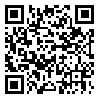Volume 19, Issue 1 (2019)
QJER 2019, 19(1): 83-104 |
Back to browse issues page
1- Assistant Professor in Economics, Mofid University, Qom , kiaalhoseini@mofidu.ac.ir
2- Associate Professor of Economics, Mofid University, Qom, Iran
3- M.A. in Economics, Mofid University, Qom, Iran
2- Associate Professor of Economics, Mofid University, Qom, Iran
3- M.A. in Economics, Mofid University, Qom, Iran
Abstract: (8402 Views)
Exacerbating income inequality and increasing crimes give rise to waste of human and financial resources of the society. However, causality direction between income inequality and crime remains a controversial issue. Applying Hsiao’s causality test for the 1984-2014 period, this study examines the direction of causality between these social problems in Iran. The crimes under study include crimes against property (embezzlement, bribery, forgery, theft and bounced checks) and violent crimes (murder, battery, duress and harassment). In addition, Gini coefficient is used as an inequality index. The optimal lag lengths are one for crimes against property and two for violent crimes, respectively. Findings indicate significant bidirectional causal relationships between income inequality and two kinds of crimes.
Keywords: Crimes against property, Violent crimes, Income inequality, Bidirectional causality, Hsiao’s causality test
Article Type: Original Research |
Subject:
Economics
Received: 2017/10/8 | Accepted: 2018/07/7 | Published: 2019/03/17
Received: 2017/10/8 | Accepted: 2018/07/7 | Published: 2019/03/17
| Rights and permissions | |
 |
This work is licensed under a Creative Commons Attribution-NonCommercial 4.0 International License. |


